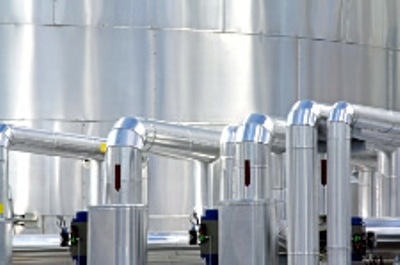Unlike 304L, Type 304H has a higher carbon content making the steel more suitable for use in applications where elevated temperatures are present. It is an austenitic chromium-nickel steel alloy and the greater carbon content delivers an increased tensile and yield strength.

The material is recommended for use in ASME pressure vessels in working service above 525° C due to the grade's heat resistant properties.
Benefits of using 304H Stainless Steel
Benefits of using Grade 304H stainless steel include:
- Higher carbon content gives the material greater heat resistant qualities
- Higher tensile yield strength
- Greater short and long term creep strength
Applications of 304H Stainless Steel
304H stainless steel is commonly found in the oil refining, gas and chemical industry and is used in industrial boilers, pressure vessels, heat exchangers, pipelines and condensers. The material is also used throughout the power generation industry.
Chemical Composition of Grade 304H Stainless Steel
The chemical composition of Grade 304H Stainless Steel is provided in the table below.
| UNS NO |
Grade |
C |
Si |
Mn |
P |
S |
Cr |
Mo |
Ni |
N |
| S30409 |
304H |
0.04/0.10 |
0.75 |
2.00 |
0.045 |
0.030 |
18.00/20.00 |
- |
8.00/10.50 |
0.10 |
Mechanical Properties of Grade 304H Stainless Steel
The mechanical properties of Grade 304H Stainless Steel are provided in the table below.
| UNS No |
Grade |
Proof Stress
0.2% (MPa) |
Tensile Strength
(MPa) |
Elongation
A5(%) |
Hardness Max |
| HB |
HRB |
| S30409 |
304H |
205 |
515 |
40 |
201 |
92 |

This information has been sourced, reviewed and adapted from materials provided by Masteel UK Ltd.
For more information on this source, please visit Masteel UK Ltd